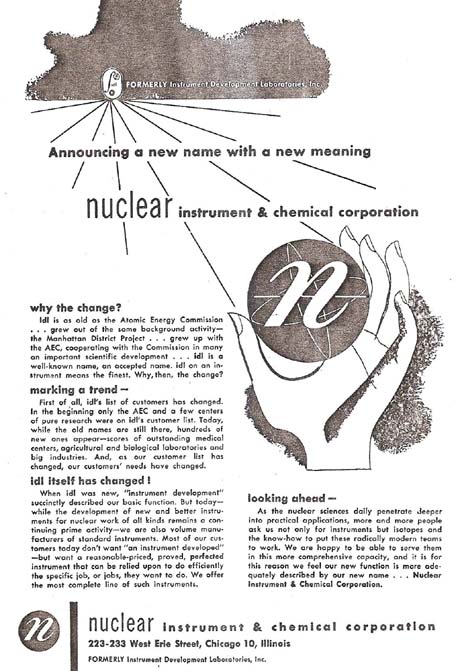
Nuclear Instrument & Chemical Corporation
The Nuclear Instrument & Chemical Corporation announced its new name with a new meaning in a dramatic advertisement (see below) in 1948. It was formerly the Instrument Development Laboratories founded by James A. (Jim) Schoke1, a pioneer in nucleonics, and who served as President of both companies. He was joined by John Kuranz and Thomas Mitchell from the Instrument Development Laboratories. They were all previously in the Army Special Engineering Detachment of the Corps of Engineers and worked on the Manhattan Project at the Metallurgical Laboratory (MetLab) at the University of Chicago during WWII. Many of the design engineers and staff at the company were connected with the Manhattan Project during 1943-1946 and provided the quality engineering required for developing the finest nuclear instruments. As a leader in the nuclear field, the company recognized its responsibility for rapid advancement of measurement techniques and instrumentation. The name change occurred because the company had grown from working primarily with the Atomic Energy Commission after the Manhattan Project developing new instruments to now servicing the expanding nucleonics field and a much broader customer base. The new company would offer a broad range of standard instruments for the laboratory but continue to do instrument development. As such, a complete line of products were offered as well as radioisotopes and the "know how" to put these new radically modern teams to work. They were located at 223-233 West Erie Street in Chicago, Illinois in 1949. They offered “Precision Instrumentation for Nuclear Measurements”. In 1954, the company changed its name to Nuclear-Chicago.
1James Schoke is an adviser to the National Radiation Instrument Catalog and provided historical details for this article on the Nuclear Instrument & Chemical Corporation in 2013. The Atomic Heritage Foundation posted an interview with Jim Schoke. To view the interview, click the link below.
http://manhattanprojectvoices.org/oral-histories/james-schokes-interview

Nuclear Instrument & Chemical Corporation announcing new name 1948
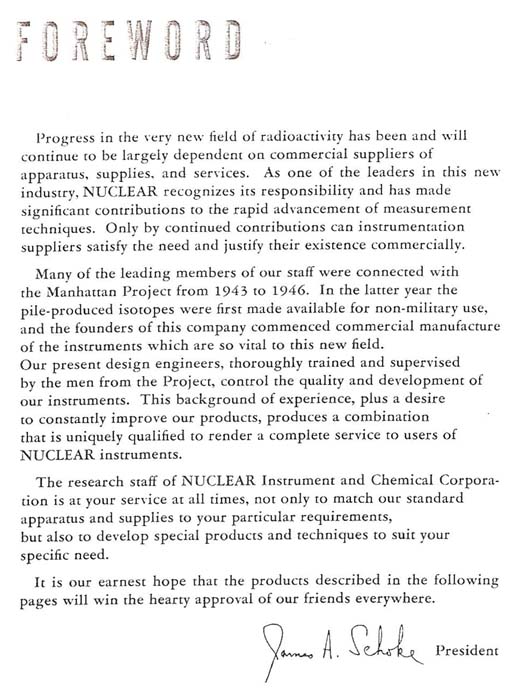
Nuclear Instrument & Chemical Corporation Catalog K forward by James A. Schoke, President 1950

Nuclear Instrument & Chemical Corporation 1948

Nuclear Instrument & Chemical Corporation 1949

Nuclear Instrument and Chemical Corporation 1951
The Model 1613 was introduced in 1950 as the “Classmaster”, a training demonstration aid for classroom or laboratory instruction of radioactivity. It measured 9” x 10’ x 14” and weighed 16 lbs. It operated on AC power. It had an external thin wall glass Geiger tube for gamma and beta greater than 200 keV. It came with accessories including two radium beta gamma sources. The high voltage was variable from 600 to 1500 volts. The scale sensitivity was 1,500 and 15,000 cpm. It came with a 26” long mounting fixture along with aluminum, cardboard and lead absorbers, as well as a variety of scattering cylinders. It had an option to plug in an 8” meter for better classroom visualization. There were “Special Classmasters” which had alpha, beta and gamma detectors. The Model 1613A is an improved version of the Model 1613. It allowed classroom demonstrations on nuclear phenomena and permits many characteristics to be calculated quantitatively. There is a neon tube flash or an audible click. It came with radioactive sources and absorbers allowing a full range of experiments. The kit included a 20-page instruction manual for high school students.
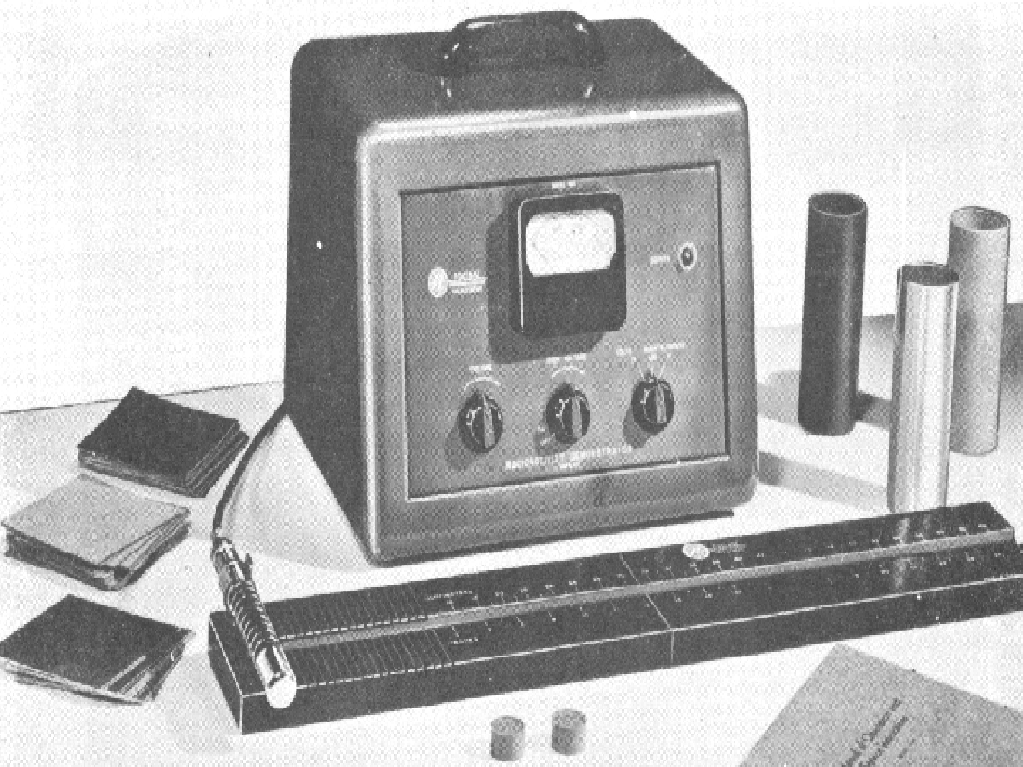
Nucl Inst and Chem Model 1613 1950
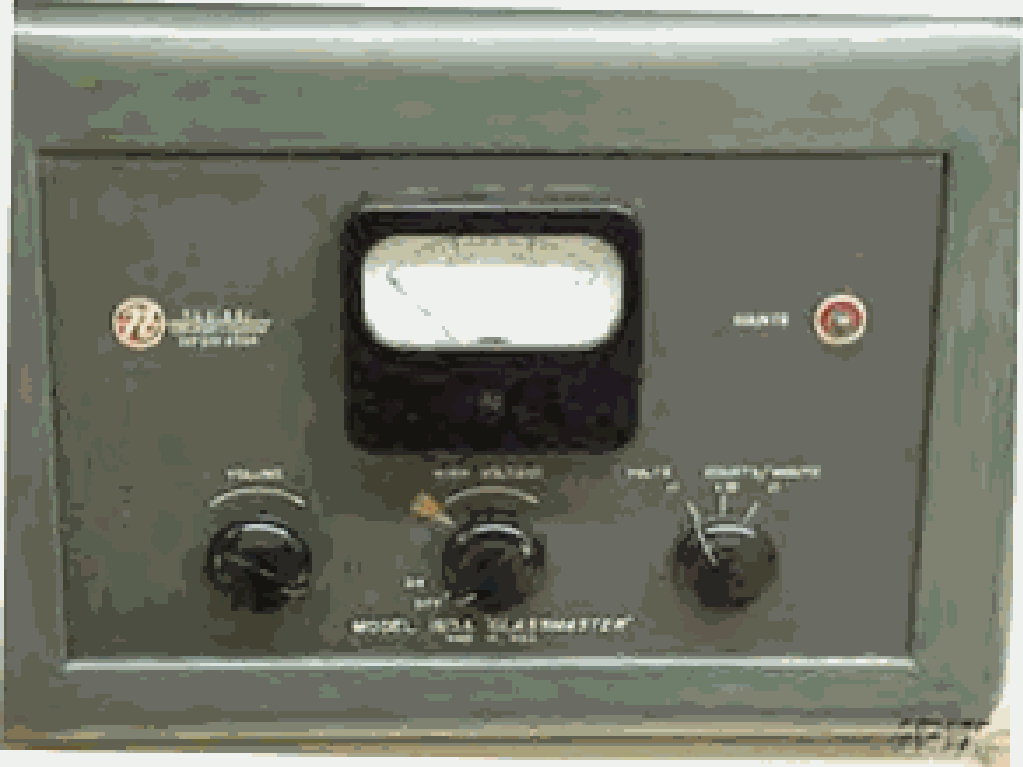
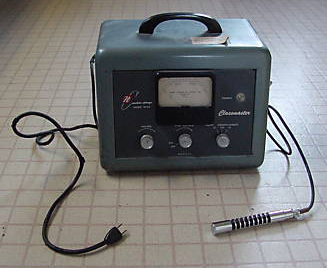
Nucl Inst and Chem Model 1613A 1950

Nuclear Inst and Chem Corporation Classmaster Ad 1950
In 1950, Nuclear Instrument and Chemical Corporation introduced the Model 1615 as the Radiation Sentinel. It was an alpha, beta, and gamma detection laboratory system. It was designed for use in checking clothing, benches, glassware and hands for contamination. It came with either a beta-gamma or alpha, beta and gamma detector. It could also be use for continuous air monitoring. It has five ranges from 500 to 50,000 cpm. The probe contains a permanent magnet so that it can be located in any position on the case. An optional 10’ cable is available to permit the use of a “Radiation Sentinel” for hospital or clinics for surveying patients. An input for a chart recorder was available. It measured 9”x10”x14” and weighed 20 lbs. It operated on AC.
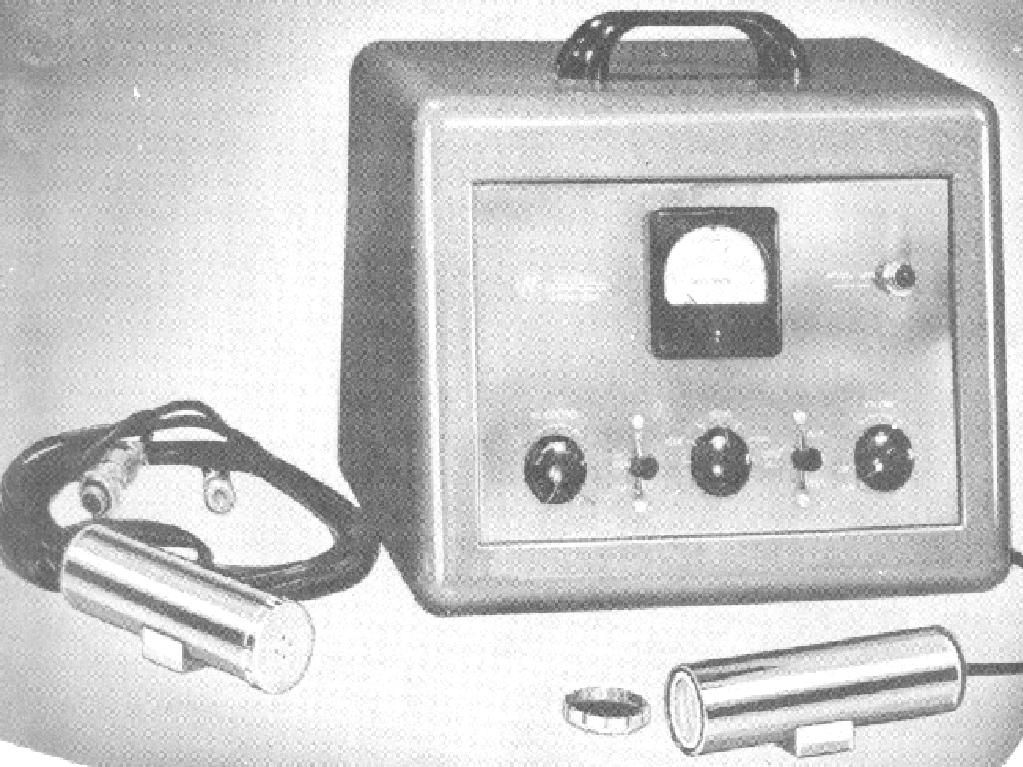
Nuclear Inst and Chem Model 1615 1950
The Model 1616 Ore-Caster was a bench top unit for quickly and easily checking the strength of ore for radioactivity. The unit comes with ore receptacle, Geiger counter, and paper tubes for counter protection. The unit sold for $199.50 in 1951. This unit would allow individuals to do their own uranium assays without the AEC.
Need photo
Nucl Inst and Chem Model 1616 Ore-Caster 1950
The Model 1619 “Labitron” was offered in 1954. It was designed for use with an alpha, beta or gamma probe. It was useful for laboratory or medical environments. It has four ranges for counts up to 20,000 cpm. It has a built in loudspeaker.
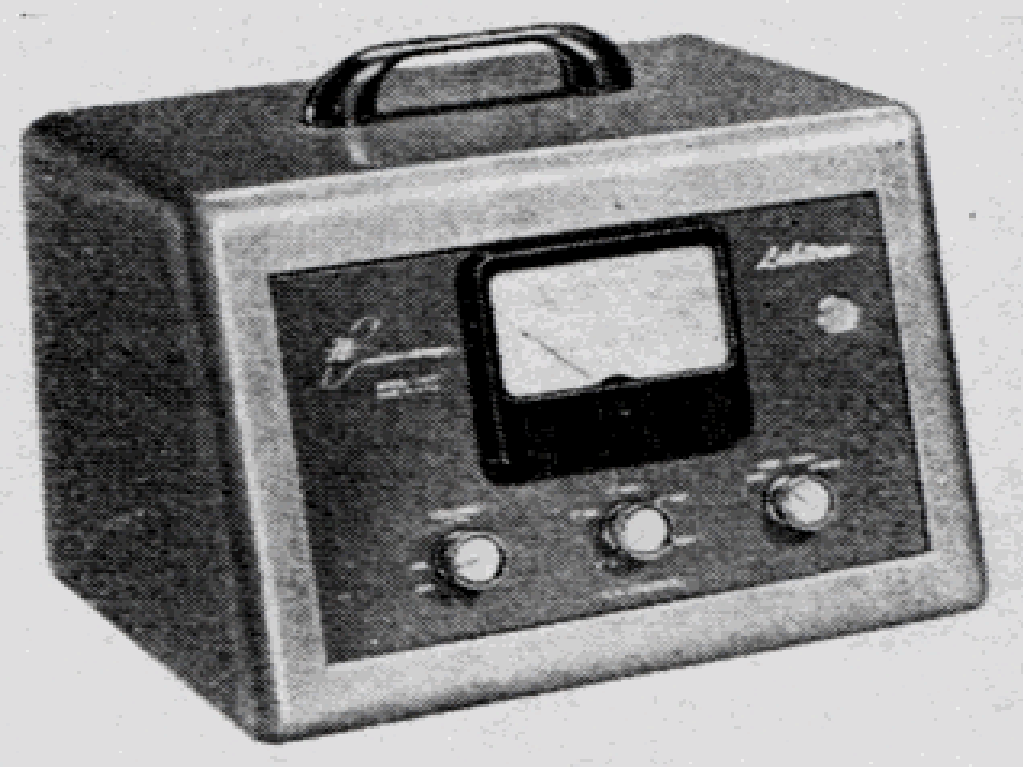
Nuclear Inst and Chem Model 1619 Labitron 1954
The Model 1620 was offered in 1955. It was an Analytical Count Rate Meter which direct reading in cpm. It has six ranges to 100,000 cpm. It has a built in high voltage supply and a 4” meter. . It can be used with either a GM tube or scintillation counter and connected directly to a chart recorder.
Need photo
Nucl Inst and Chem Model 1620 1955
The Model 2301 “Sniffer” was a portable beta-gamma survey meter introduced in 1949. The unit was designed to allow fisherman, campers and vacationers to get in on uranium prospecting. It was 7.5”x4”x2.5” and weighed 2 lbs. It had a 1200V supply from two 1.5V batteries. The background was 15 cpm. A beta window is provided. There are headphones or a neon bulb for indications. The Geiger counter tube was special stainless steel beta-gamma counter. It came with a radioactive source.
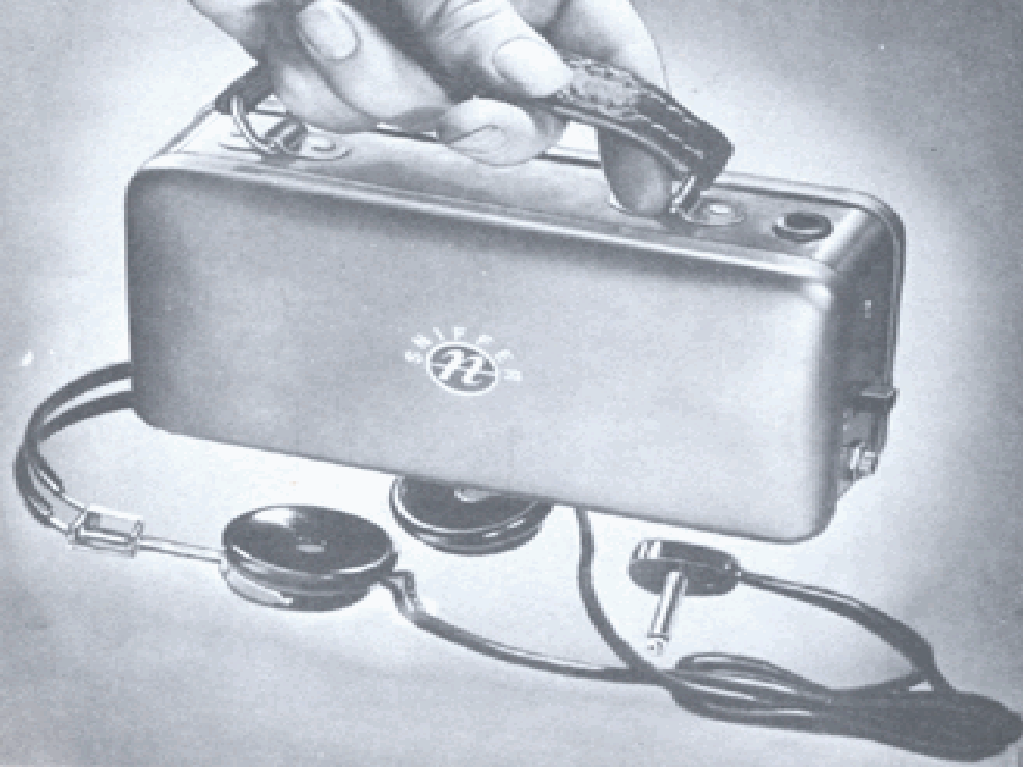
Nucl Inst and Chem Model 2301 Sniffer 1950
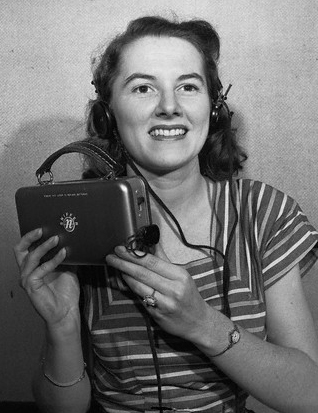
Nucl Inst and Chem Model 2301 Sniffer 1950's
The Nuclear “Super Sniffer” was introduced in 1950 for the vacationer that was interested in uranium prospecting. It was an improved version of the “World Famous Sniffer”. It had a neon lamp in addition to the earphones for count indications. It is powered by two flashlight batteries. The unit is 7.5” x 4” x 2.5” and weighs less than 2 lbs. It claims high voltage up to 1200V. It has a stainless steel Geiger tube and both beta and gamma can be detected. Only control is on/off switch. A clip is provided for attaching unit to belt. The units sold for $49.50 in 1951.
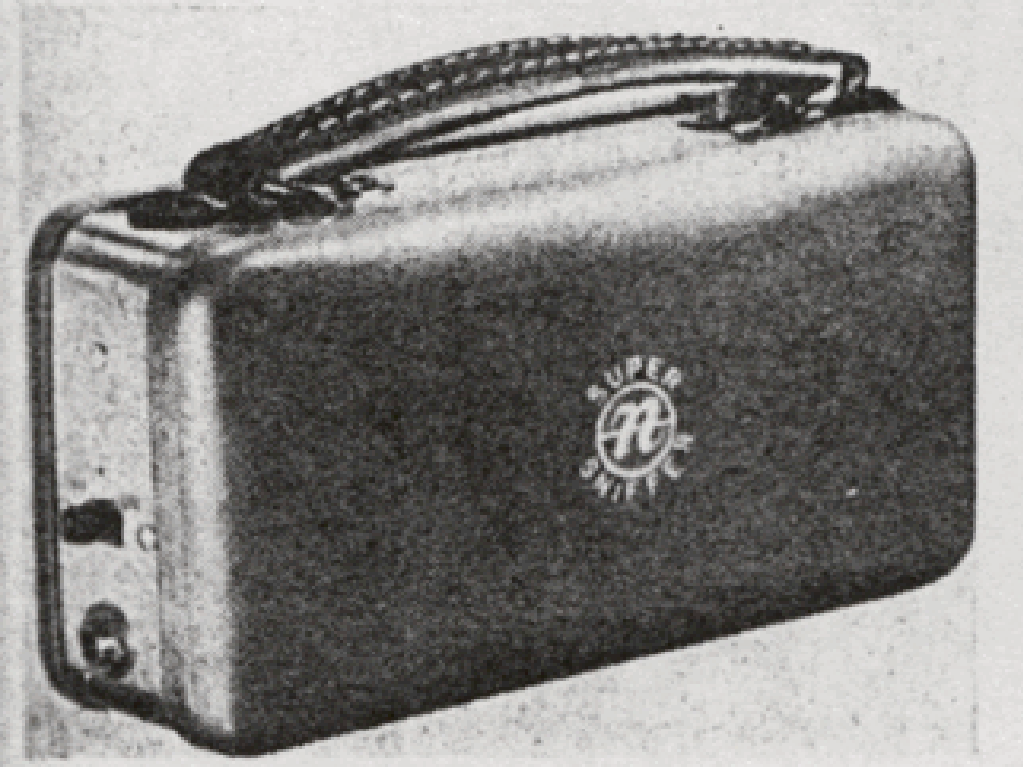
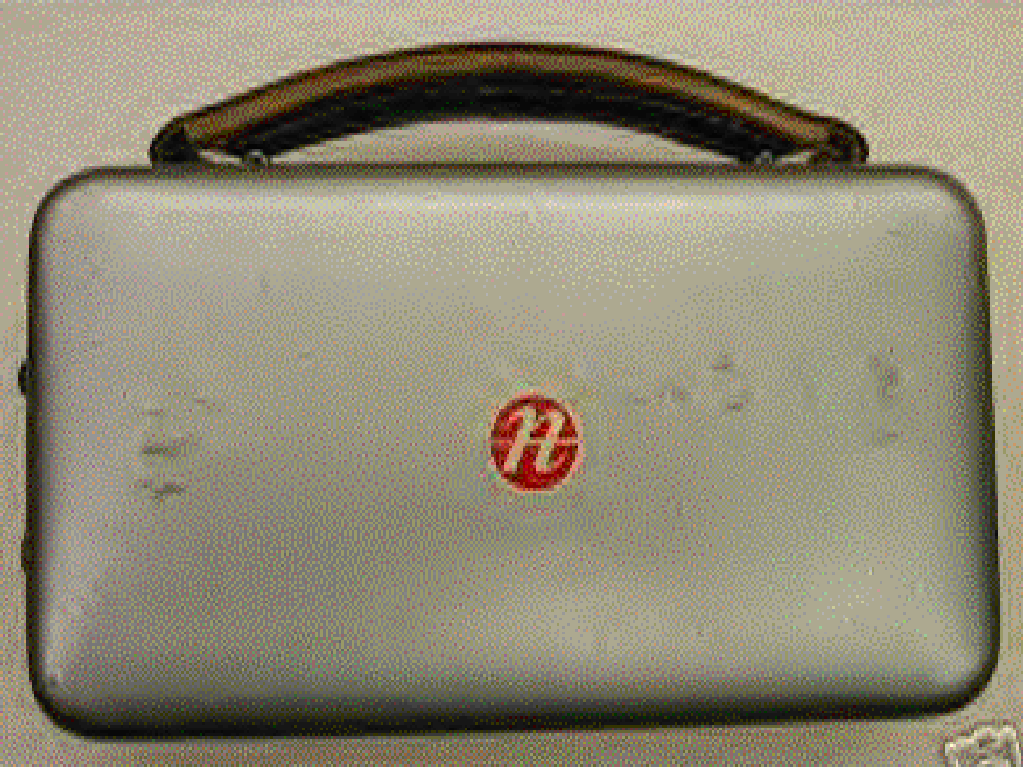
Nuclear Inst and Chem Model 2301 1950
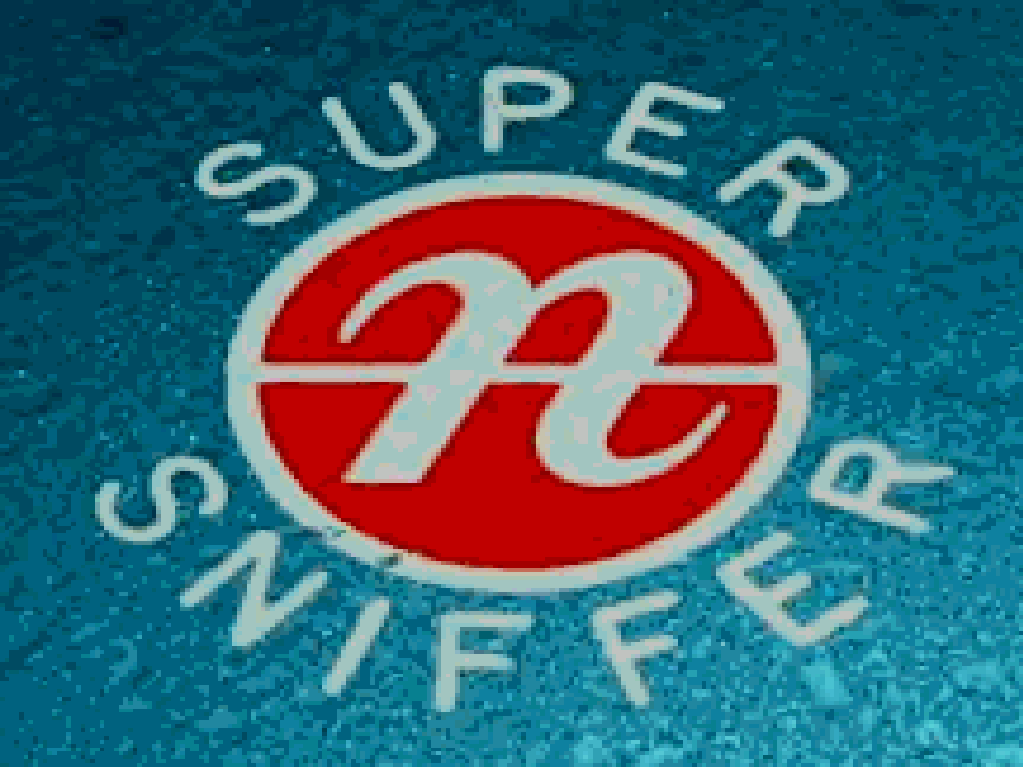
Super Sniffer Logo
The Model 2302 Super Sniffer was introduced in 1954. It similar to the basic sniffer but provide visual indication by means of a neon flasher. It uses two flashlight batteries. It also has a beta window on the bottom of the unit. It weighs less then two pounds.
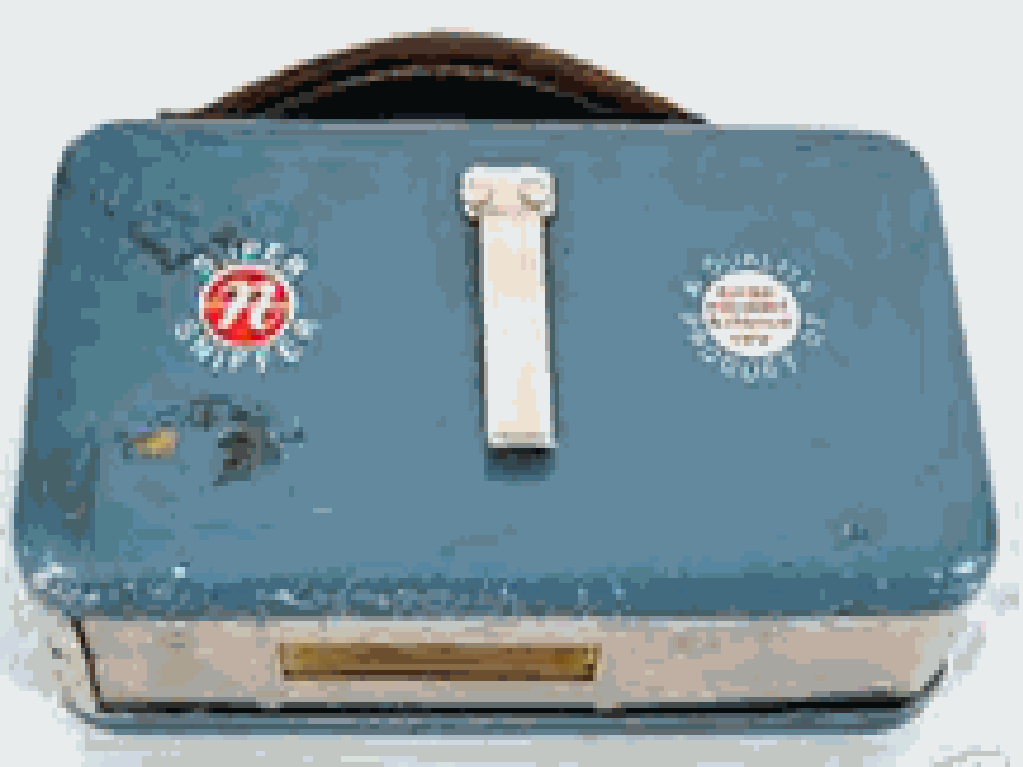
Nuclear Inst and Chem Model 2302 Super Sniffer 1954
The Model 2610 was a portable beta gamma count rate meter with a thin wall glass GM tube contained in an external probe introduced in 1948. The unit was 4.5” x 8” x 11” and weighed 9.5 lbs. It could detect from 0.2, 2 and 20 mR/h. It used a 1.5, a 22.5 and three 300-volt batteries. It was welded steel with gray enamel. The probe was attached to the end of the unit using clips. There was also a Model 2610 modified version available for only gamma radiation in 1949. The unit was also designated AN/PDR-7.
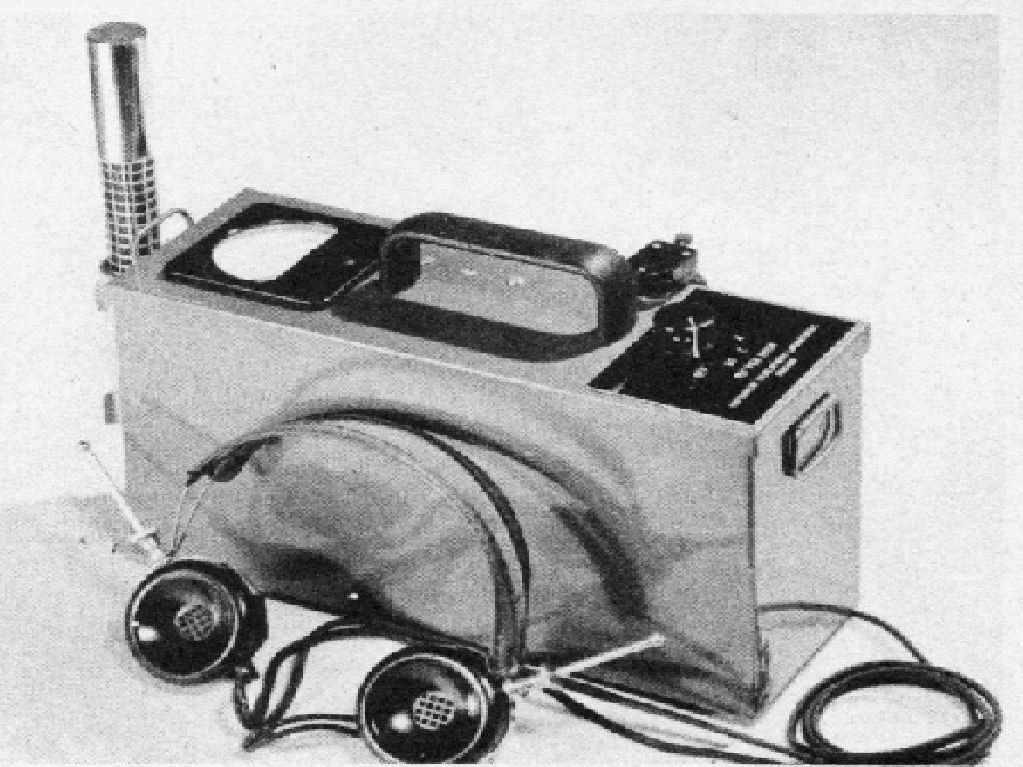

Nuclear Inst and Chem Model 2610 1948
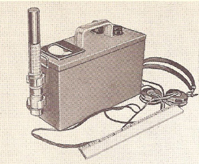
Nuclear Inst and Chem Model 2610 1951
The Model 2610A was introduced in 1950. The unit detects both beta-gamma radiation and was designed for contamination surveys. It had a glass walled GM tube that was organic quenched. It has a plug-in probe with a Geiger tube and a sliding beta shield on a 36” cable. The probe was held in a clip in the handle. The meter is calibrated for 0.2, 2, and 20 mR/h and 600, 6000 and 60,000 cpm. Calibration may be checked with the attached radioactive source. The case is lightweight and watertight aluminum designed without any sharp corners. The tube operates at 900 volts with three 300 volt batteries. The circuit is powered by one 1.5 and on e 67.5 volt batteries. The smaller lighter probe snaps into the handle for ease of transport. The unit is 10-3/4” x 5” x 8.5” and weighs 9 lbs. It has a radioactive calibration source mounted on the instrument. It comes in an aluminum case with a gray hammertone finish. It was chosen for the AEC Emergency Monitoring Kit in 1951. The unit sold for $220 in 1951.
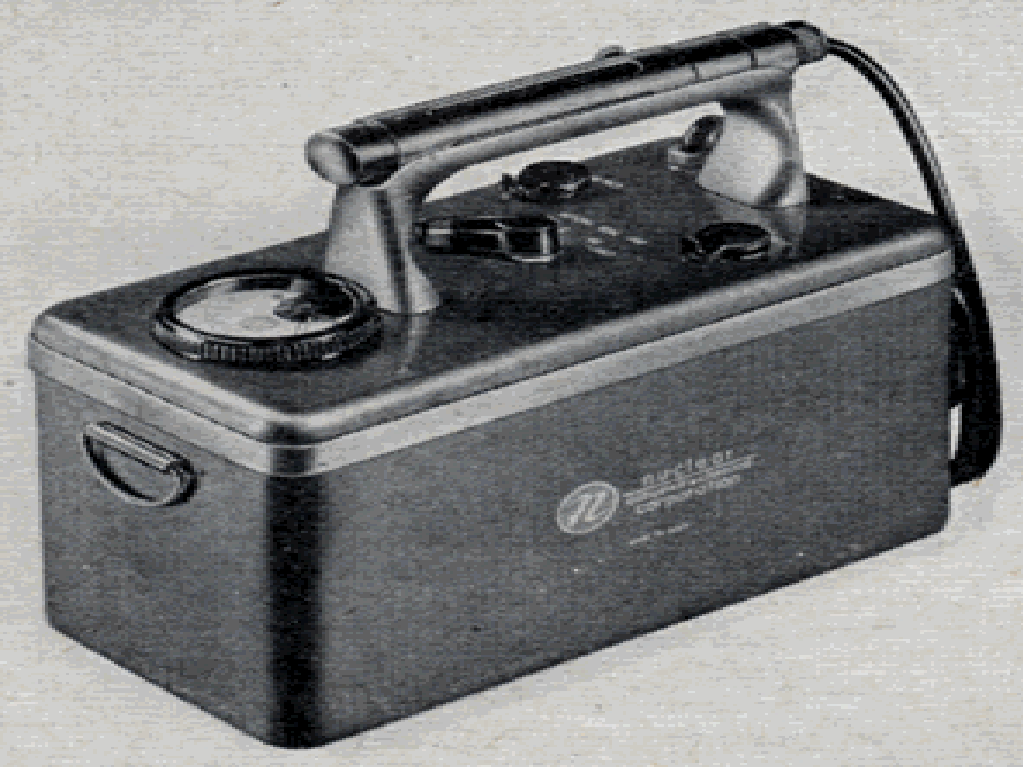
Nuclear Inst and Chem Model 2610A 1949
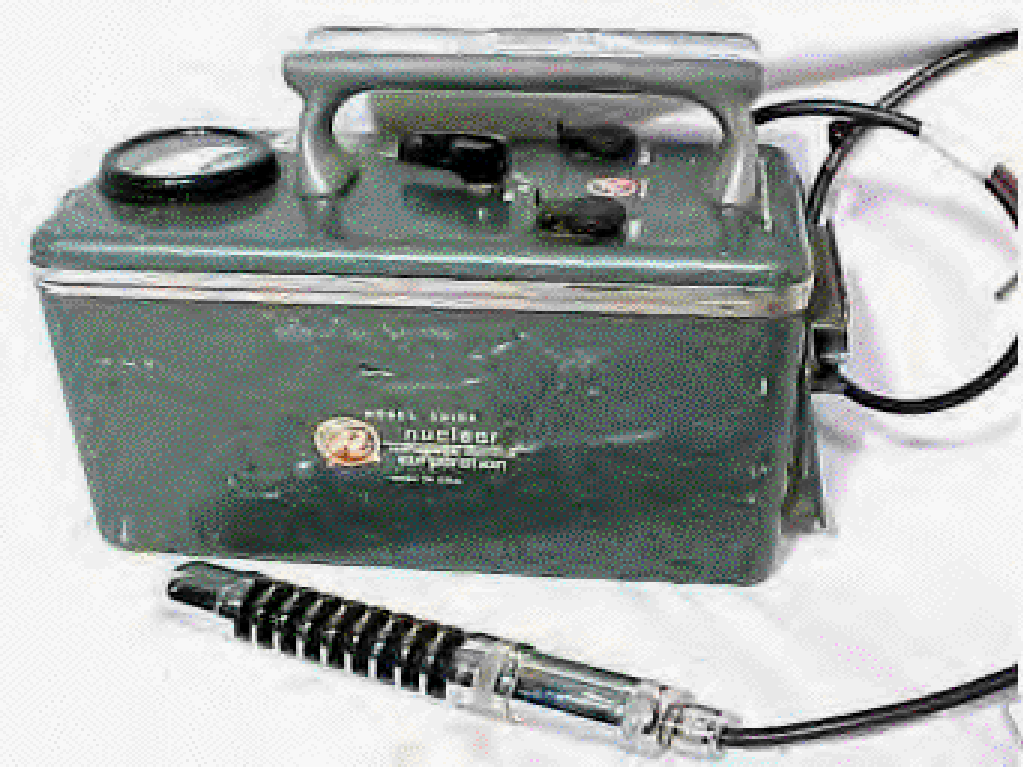
Nuclear Inst and Chem Model 2610A 1950
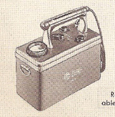
Nuclear Inst and Chem Model 2610A 1951
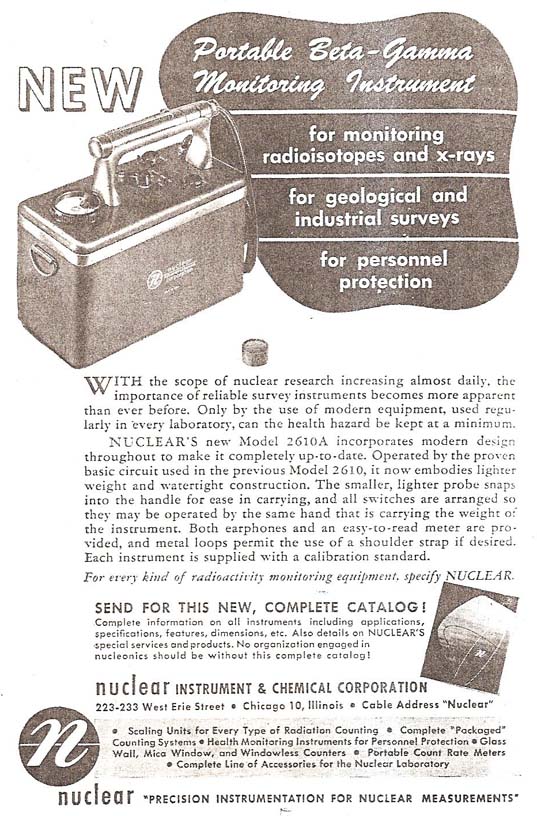
Nuclear Inst and Chem Model 2610A Ad 1949
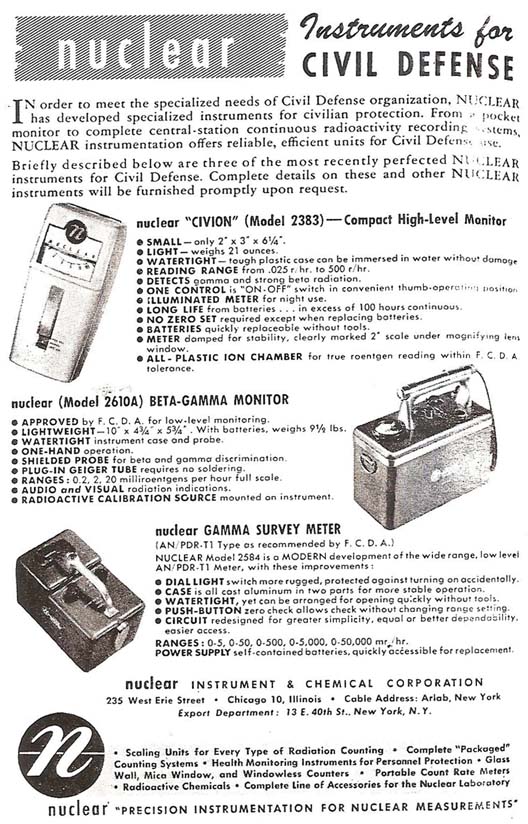
Nuclear Inst and Chem Ad 1951

Caddy John Gullickson finds a lost golf ball (radioactive) with a Geiger Counter as a new golf course opened here today in the Great Smoky Mountains. The player is Miss Trula McMahan, "Miss Gatlinburg" who was on hand to play the course on opening day, United Press Photo, 1955. The instrument being used is the Nuclear Instrument and Chemical Company Model 2610A.
The AEC selected the Model 2610A for the AEC Emergency Monitoring Kit. The kit contained an assortment of items for a radiological emergency including the protective clothing, a Model 2610A meter, the Juno ionization chamber, two Cambridge dosimeters, and one radium button.
Need photo
AEC Emergency Monitoring Kit 1951
The Model 2611 was introduced in 1950. It was a portable alpha, beta, and gamma instrument. It is similar to the Model 2610 but has a halogen-filled thin mica end window probe. It reads in cpm for alphas and betas and mR/h for gammas. The three decade scale is from 0.2 to 20 mR/h and 800 to 80,000 cpm beta and alpha. The unit is 10” x 4.75” x 5.75” and weighs 9 lbs.

Nuclear Inst and Chem Model 2611 1950
The Model 2612 was designed as a general purpose survey instrument in 1954. It had a choice of two tubes, a 0.2 MeV gamma, beta or mica end window type). It has scales from 0.2, 2, 20 mR/h. A calibrated radiation source is mounted on the case. The unit features rugged waterproof construction.
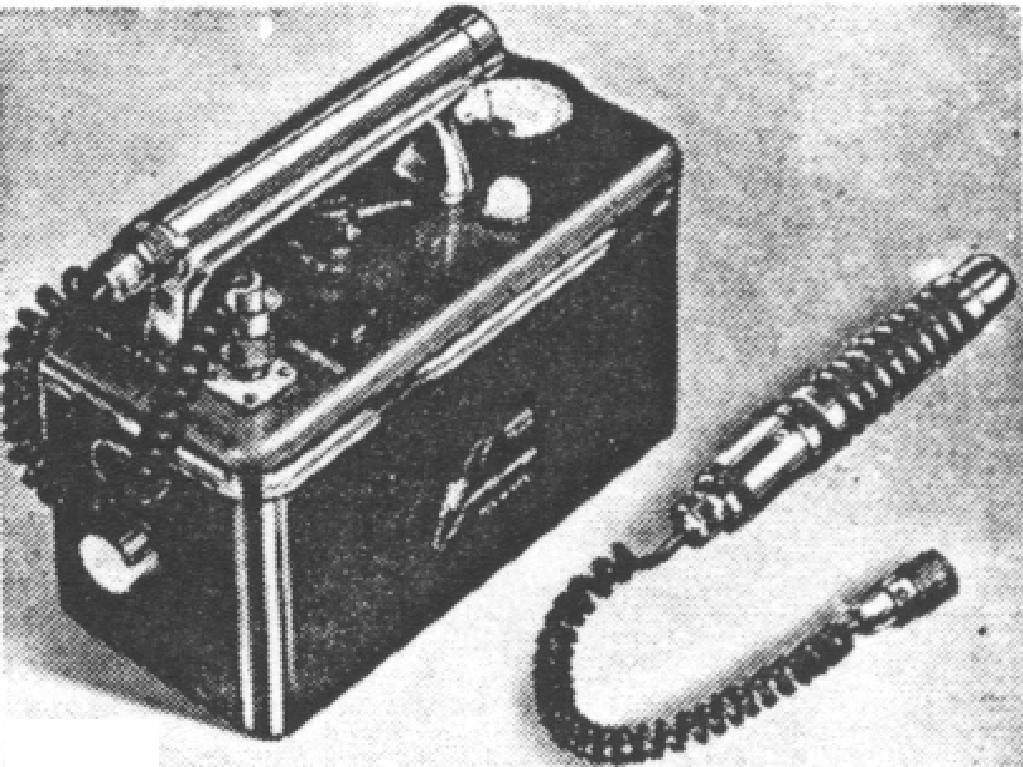
Nuclear Inst and Chem Model 2612 1954
The Model 2612L was introduced in 1956 and had a sensitive probe for uranium prospecting.
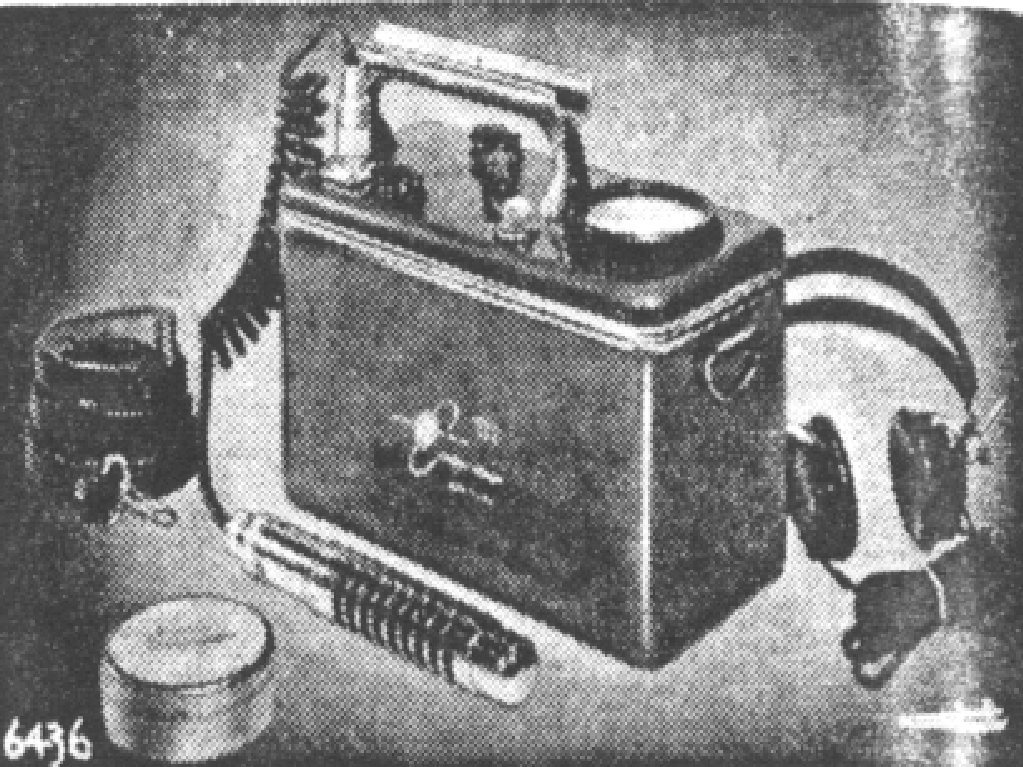
Nuclear Inst and Chem Model 2612L 1956
The Model 2714 “Neut” was offered in 1950 for portable measurements of fast neutron flux in a gamma field. The unit is an ion chamber survey meter for health monitoring near reactors. It was the only commercial of it type. There are four ranges of gamma and neutron radiation are available for gamma from 1.75, 17.5, 175, and 1750 mR/h and for neutrons from 100, 1000, 10,000, and 100,000 neutrons/cm2/s. Three chambers were supplied to allow measurement of gamma plus neutron flux, and gamma only flux thereby allowing the determination of neutron radiation. The unit measures 8.5” x 5-3/4” x 5.5” and weighs 9.5 lbs. The chamber had a 3.5” diameter and was 6” long. The 1955 unit has twin ionization chambers that “bayonet into place”.

Nuclear Inst and Chem Model 2714 “Neut” 1950
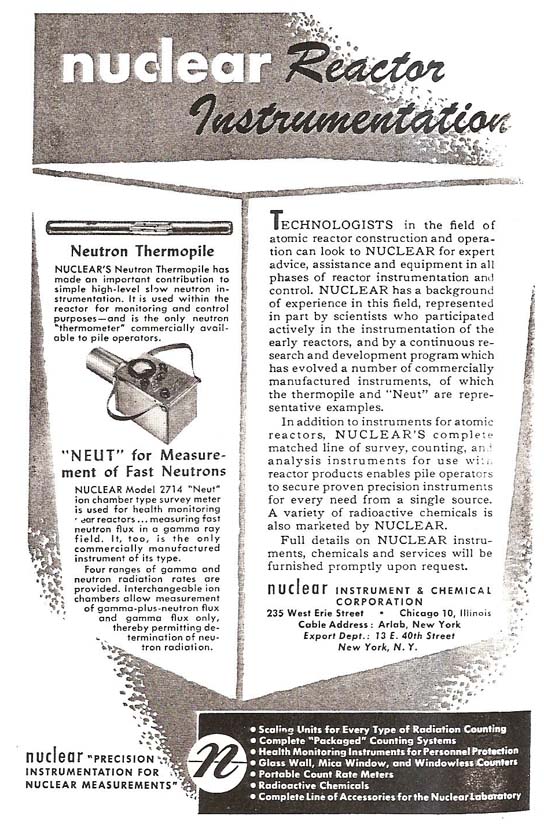
Nuclear Inst and Chem Corporation Model 2714 "Neut" Ad 1951
The Pee Wee was an alpha survey meter originally developed at the Los Alamos Scientific Laboratory in 1947. The Laboratory developed several instruments in the mid 1940’s under the secrecy of the Manhattan Project. The LASL document LAMS-740 “Design and Construction of the Pee Wee Portable Proportional Alpha Survey Meter” was originally classified SECRET and declassified in 1995. The Laboratory provided the name Pee Wee and it is was not used by the manufacturer. The Pee Wee was a replacement for the Mark I, Model 41 instrument.
The Model 2715 “Nemo” was introduced in 1951 as a portable instrument for measuring thermal and fast neutrons separately. It contained two enriched boron trifluoride neutron detectors. One detector is unshielded for detecting thermal neutrons. The other is surrounded by a paraffin block and a cadmium shield and is sensitive to only neutrons with energies above 1 eV. The detector was insensitive to gammas up to approximately 1 R/h. The Nemo was named after the captain of the fictional Nautilus submarine from the book "20,000 Leagues Under the Sea" by Jules Verne published in 1869. The Nemo was designed to be used on the USS Nautilus (SSN-571), the world's first operational nuclear reactor powered submarine. The Nautilus was launched in 1954.
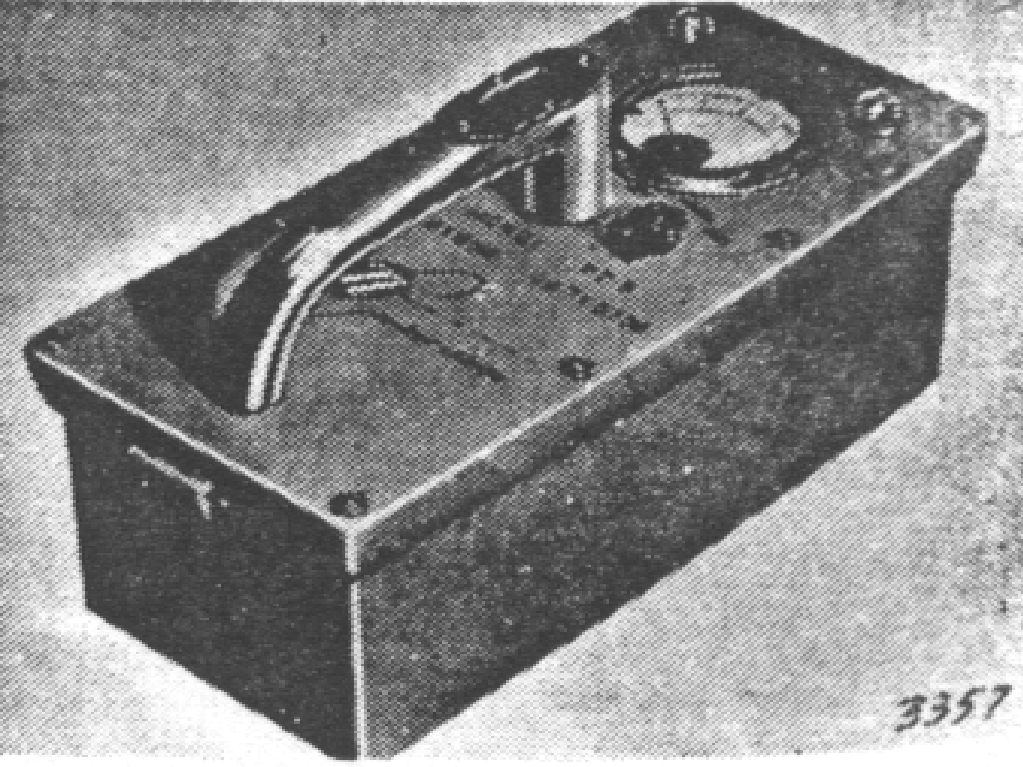

Nuclear Inst and Chem Model 2715 "Nemo" 1954 (left) and the USS Nautilus (right)
The Pee Wee was a portable alpha survey meter with earphones for aural indication of radiation and a meter for rate measurements. The box is aluminum and measures 5-3/8” x 8” x 11.5” and has a bakelite bottom. The meter is in microamperes and calibrated 0-20. It weighs 15 lbs. and used two 1.5V and one 67.5V batteries. It came in a canvas bag and shoulder strap. In order to decrease possible contamination, the probe pocket in the case had snap fasteners so that it could be removed and cleaned or replaced. It could be used with three types of probes. The 4”x6” opening probe had a thin window and screen. The other two were pencil probes ½” on each side and 8” or 10” long. The pencil probes are open on one side with thin screen.
Nuclear Instrument and Chemical Corporation manufactured the Pee Wee alpha meter as the Model 2111 in 1948. The unit detects alpha in the presence of gamma radiation. It has an external 9” x 2” pencil probe in which the proportional ionization chamber is housed. The unit is 11-7/8” x 5-3/8” x 8” and weighs 16 lbs. The probe has a steel lid over 0.25 mil Mylar window. It has two sensitivity scales 0-2000 cpm and 0-20,000 cpm. The unit operates at 2200V and it has a high voltage switch. It has a push button switch to reset after and exposure reading. It also has a Tuballoy (natural uranium metal) source on the upper right corner of the case. It also could be used with a boron-lined counter. It used two 1200 volts batteries for the proportional counter, one 67.5 and two 1.5-volt batteries for filament power.
In 1957, the University of California Radiation Laboratory Model “Robbie” was introduced as a modified Pee Wee. The unit had the same look but incorporated a transistorized power supply. The AC voltage is stepped by a transformer. The Pee Wee was referred to as the Model 48-N in 1958.
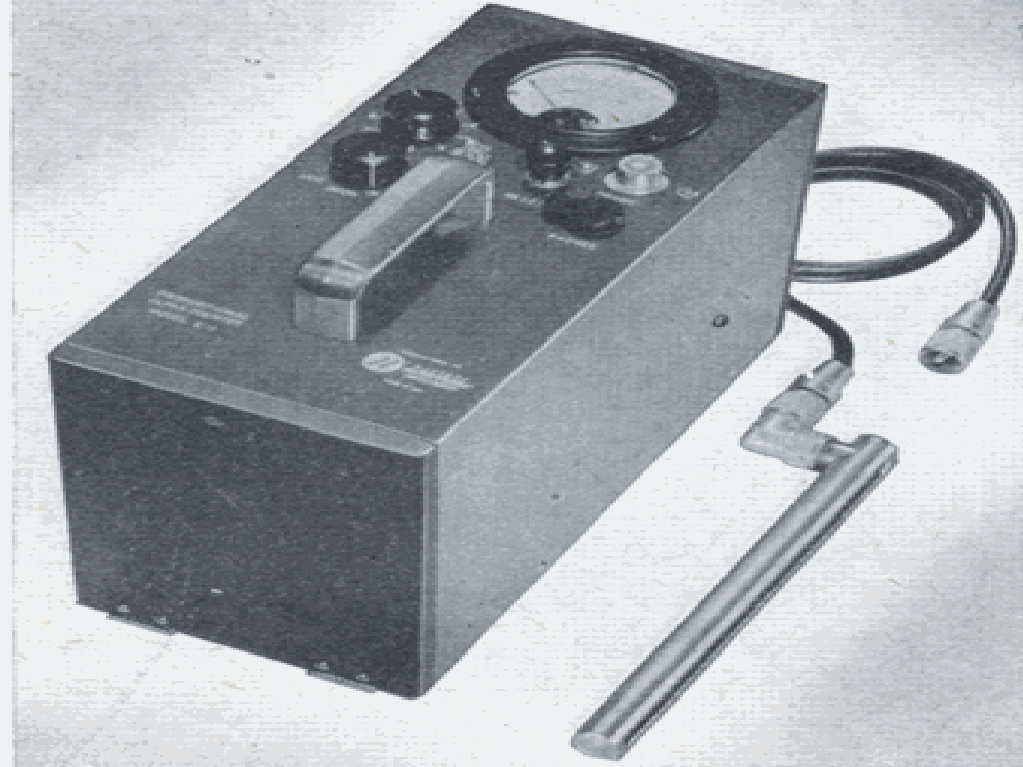
Nuclear Inst and Chem Model 2111 1950
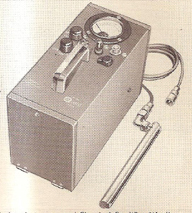
Nuclear Inst and Chem Model 2111 Pee Wee 1951
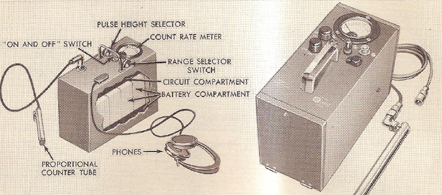
Nuclear Inst and Chem Model 2111 Pee Wee 1951
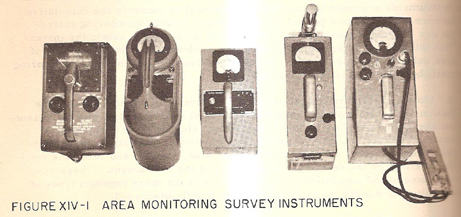
Nucleonics Fundamentals Book showing several Nuclear Inst and Chem Models 1952
The Model 2111N was a proportional counter used for neutron detection. It was used at the Los Alamos Scientific Laboratory in 1954 and referred to as a “Converted Pee Wee”. It used the same electronics as the Model 2111 but a different probe. The probe was a boron-lined tube with one-inch thick polyethylene moderator and twenty mil cadmium absorber. The neutron-produced recoils produce a “pop” in the earphone which are distinguishable from an alpha event. The selector has three settings – Off, x1000 and x100. The detection range is 0-10,000 n/cm2/sec. The unit weighed 20.5 lbs. The Converted Pee Wee was referred to as Model 48-A in 1958.
need photo
Nuclear Inst and Chem Model 2111N 1954
The Model 1310 Remote Area Monitron was introduced in 1953. It is comprised of an ion chamber and main chassis for measuring high gamma or neutron fluxes around reactors and accelerators.
Need photo
Nuclear Inst and Chem Model 1310 1953
A push button is provided for resetting the meter after exposure to a strong alpha source. It can accommodate several types of probes. It had a plug in circuit for ease of servicing. The batteries are replaced through a hinged door at the end of the case. The unit weighs 16 lbs.
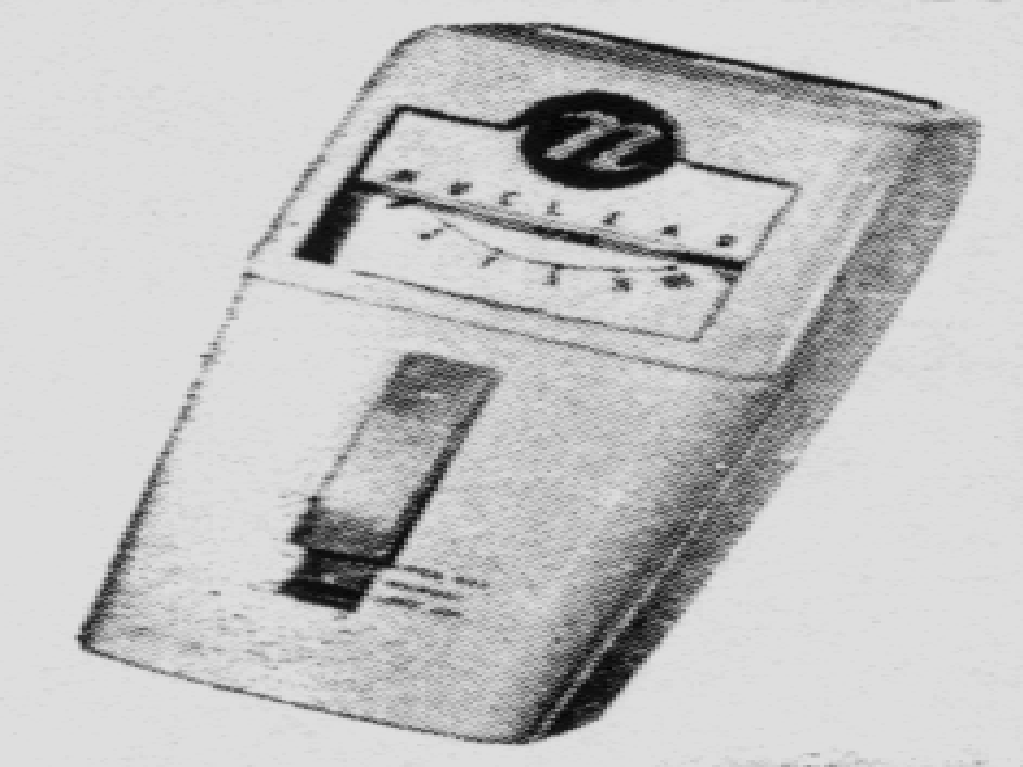
Nuclear Inst and Chem Model 2383 CIVION 1951
The CIVION Model 2383 is a compact high level monitor for Civil Defense. It measures 2” x 3” x 6.25” and weighs 21 oz. It has a tough plastic case that can be immersed in water. Ranges are from 0.025 to 500 R/h. It can detect gamma and strong betas. It has only one control, the on-off switch. It has an illuminated meter for night use. It has an all plastic ion chamber for true roentgen reading within FCDA tolerance. The unit sold for $49.50.
The first Barnaby was code name for a mobile will logging instrument for uranium exploration. It was developed by Donald Collins and Henry Faul, a geophysicist with the Union Mines Development Company. The Barnaby II was a mobile Geiger-Mueller counting rate meter for borehole logging. It measured 18” x 18” x 10” and weighed 60 lbs. It could record pulses up to 100,000 per minute. It was for use with a probe on up to 400’ of microphone cable. The four decade ranges were 100 to 100,000 cpm. The instrument case was provided with rubber shock mounts as indicated on the top and bottom wing nuts.
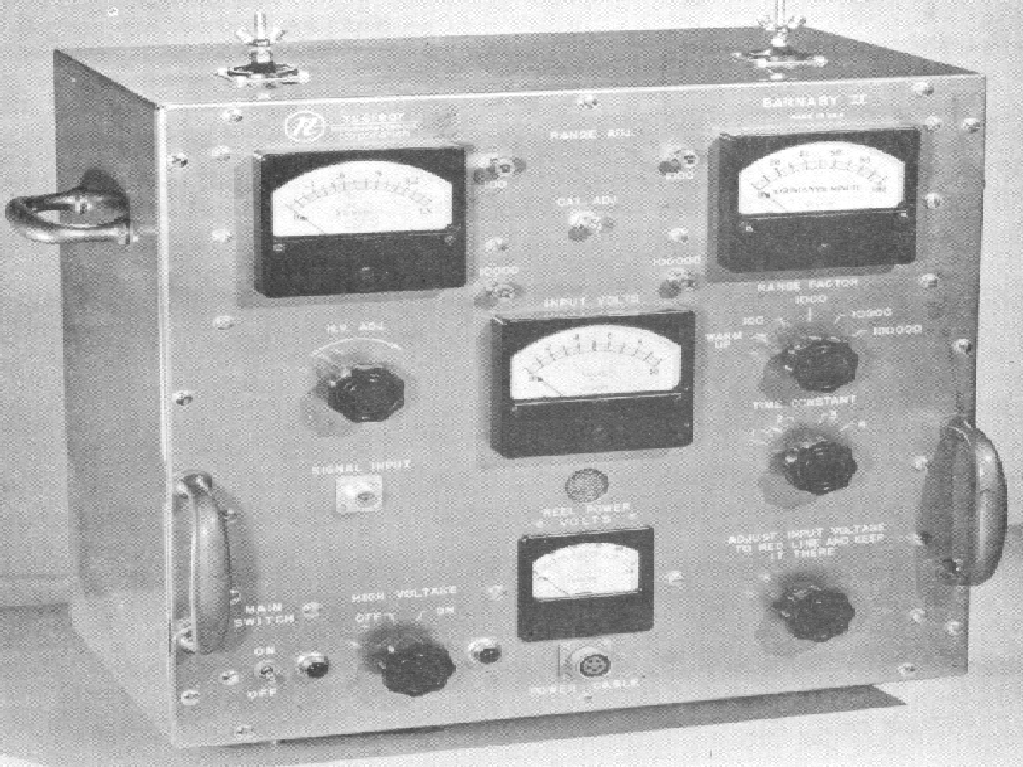
Nuclear Inst and Chem Barnaby II 1950
The Model 2581 was introduced in 1950 as a survey meter for alpha, beta and gamma radiation. It had an air ionization chamber. It was 10” x 4.75” x 5.75” and weighed 7 lbs. It was the commercial model of the Zeuto. The alpha range was 4000 and 40,000 dpm and the gamma was 4 and 40 mR/h. There were no screens to discriminate between types of radiation. The ion chamber had an aquadag nylon screen. The range switch is located under the handle to allow one hand operation.
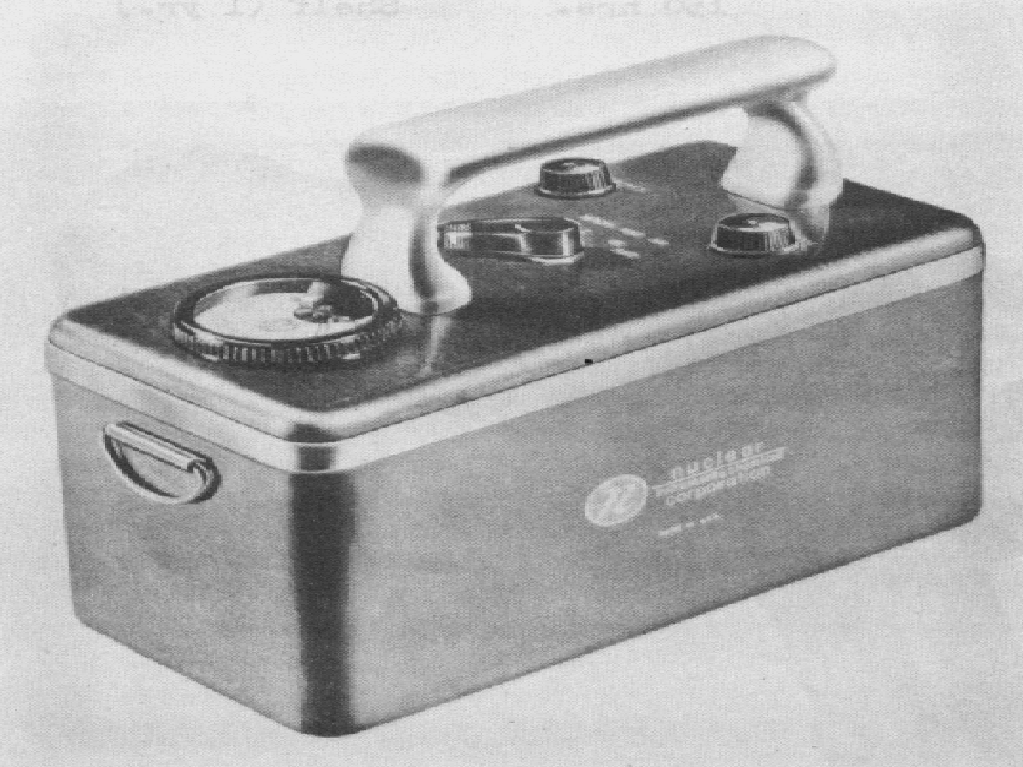
Nuclear Inst and Chem Model 2581 1950
The Model 2582 “Samson” was a battery operated ionization type survey meter introduced in 1954. It could detect low level alpha , beta or gamma radiation for surface measurements. It could detect alphas down to 1 MeV and betas to 15 keV. There are three alpha ranges from 0-12500 cpm. The 40 cubic inch ion chamber on the bottom of the case with a rubber hydrochloride window. The window is protected by a stainless steel grill.
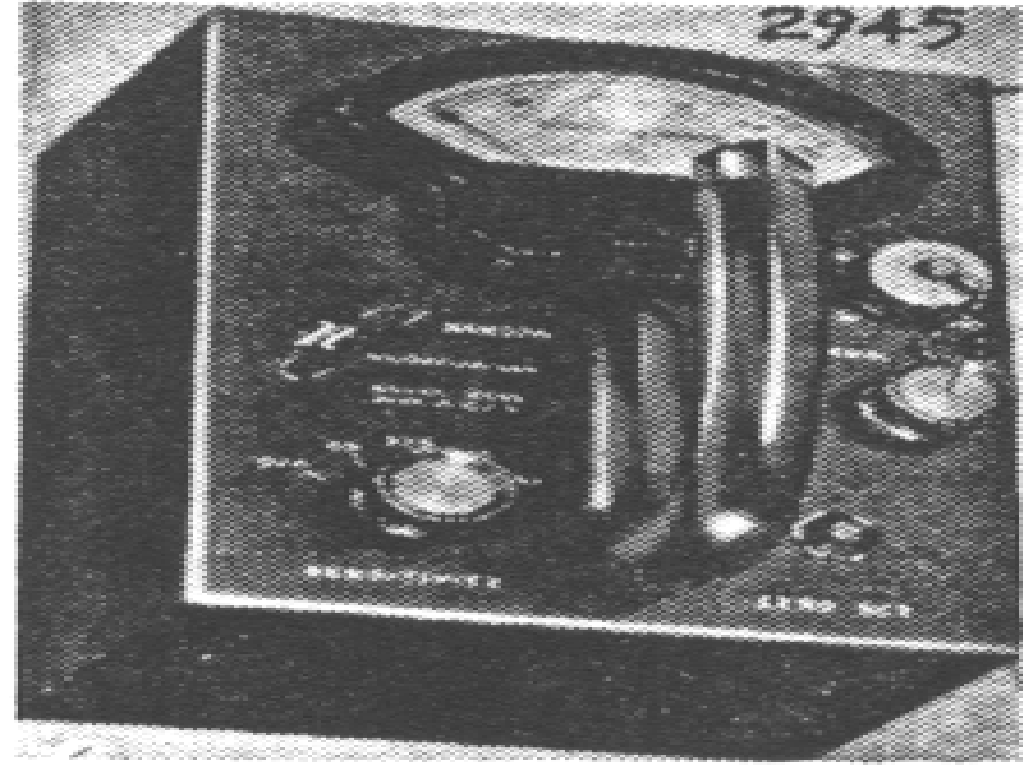
Nuclear Inst and Chem Samson Model 2582 1954
The Model 2584 is a modern development of the wide range, low level AN/PDR-T1 meter with several improvements. It is a gamma survey meter. The switches are more rugged, case is all cast aluminum in two parts, and watertight but can still be repaired easily. It has five decade ranges from 5-50,000 mR/h.
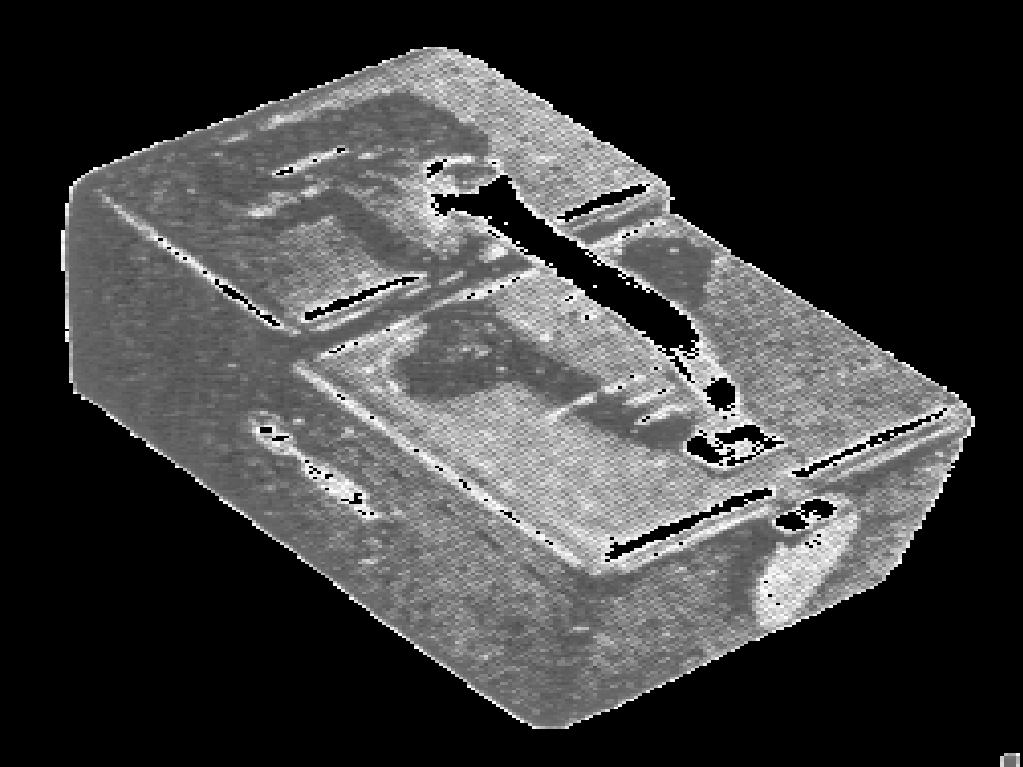
Nuclear Inst and Chem Model 2584 1951
The “Modified” Cutie Pie was offered in 1950. It was designed for special applications for the military.
Need photo
Nuclear Inst and Chem Modified Cutie Pie 1950
The Model 2585 was a wide range beta-gamma survey meter introduced in 1952. The unit utilizes principle of wartime Cutie Pie style. It can be set upright for continuous monitoring. It has a thin window to allow the entry of betas with energies down to 0.04 MeV. The front of the chamber has a rotary bakelite shield to stop betas which can be rotated into place. The main battery and electronics are located in the head of the unit for good weight balance. It has three ranges from 50, 500 and 5000 mR/h. The unit is 6” x 4” x 12.5” and weighs 3-3/4 lbs.
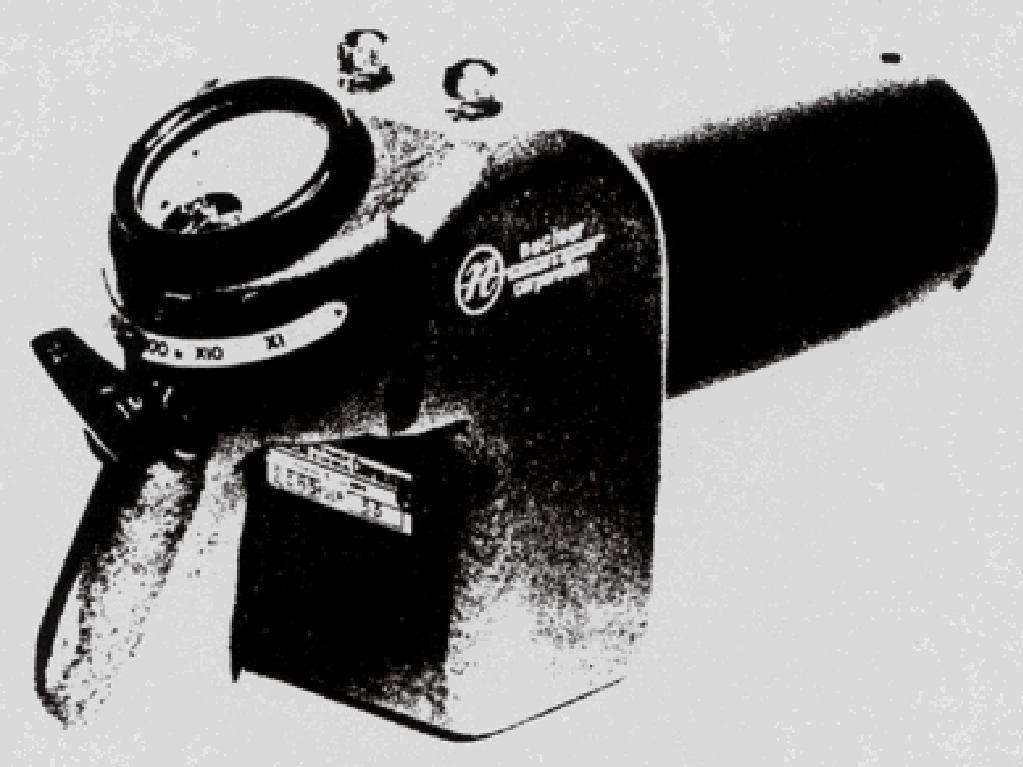
Nuclear Inst and Chem Model 2585 1952
The Cutie Pie was introduced in 1955. It was a new model of the wartime Cutie Pie and determines the radiation levels for workers. It has three ranges from 25, 250 and 2500 mR/h.
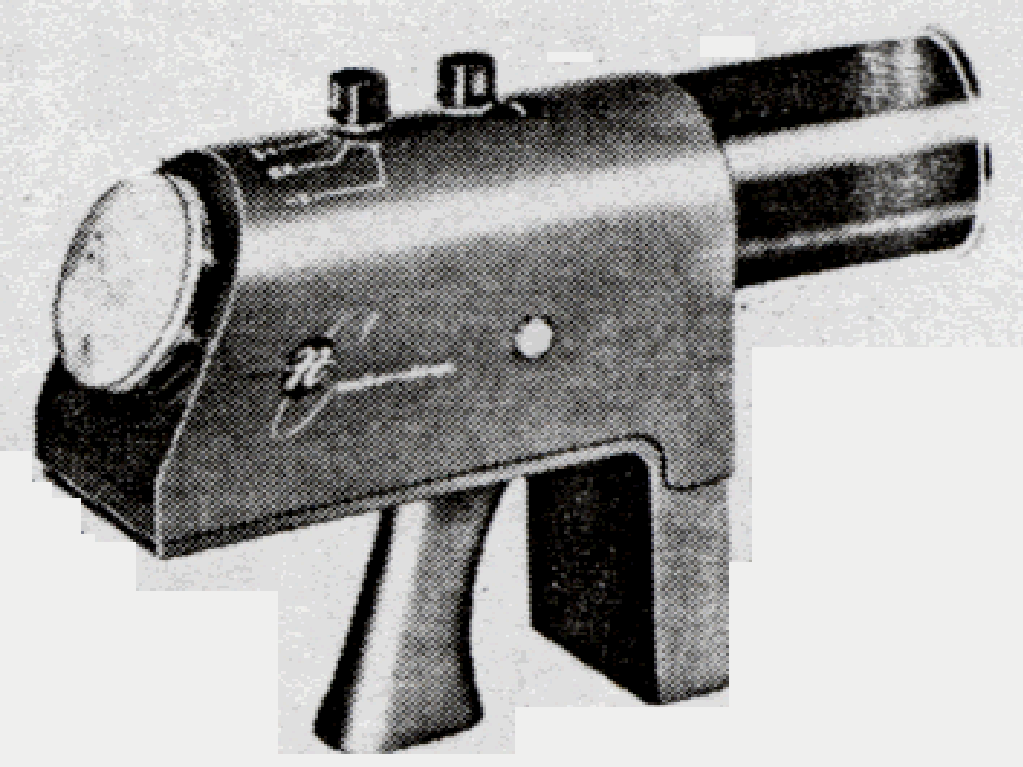
Nuclear Inst and Chem Model 2586 1955